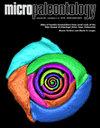汤加Elphidium tongaense (Cushman 1931),相当古老的近代有孔虫
IF 1.6
4区 地球科学
Q3 PALEONTOLOGY
引用次数: 0
摘要
罗马尼亚最东端潘诺尼亚盆地的中中新世晚期微化石组合保存了大量演化和变形的Elphidium标本,这些标本被归为最近的物种E. tongaense (Cushman 1931),最初描述于太平洋。我们的资料表明,该物种的起源可以追溯到中新世中期,当时Paratethys和印度-太平洋地区之间可能存在海洋联系。本文章由计算机程序翻译,如有差异,请以英文原文为准。
Elphidium tongaense (Cushman 1931), a quite old Recent foraminifer
The late middleMiocene microfossil assemblages from the easternmost Pannonian Basin in Romania preserve numerous evolute and deformed specimens of Elphidium, which are assigned to the Recent species E. tongaense (Cushman 1931) originally described from the Pacific. Ourmaterial suggests that the origin of the species is back in the middle Miocene, when amarine connection between the Paratethys and the Indo-Pacific regions probably existed.
求助全文
通过发布文献求助,成功后即可免费获取论文全文。
去求助
来源期刊

Micropaleontology
地学-古生物学
CiteScore
3.20
自引率
6.70%
发文量
18
审稿时长
>12 weeks
期刊介绍:
The Journal of Micropalaeontology (JM) is an established international journal covering all aspects of microfossils and their application to both applied studies and basic research. In particular we welcome submissions relating to microfossils and their application to palaeoceanography, palaeoclimatology, palaeobiology, evolution, taxonomy, environmental change and molecular phylogeny. Owned by The Micropalaeontological Society, the scope of the journal is broad, demonstrating the application of microfossils to solving broad geoscience issues.
 求助内容:
求助内容: 应助结果提醒方式:
应助结果提醒方式:


